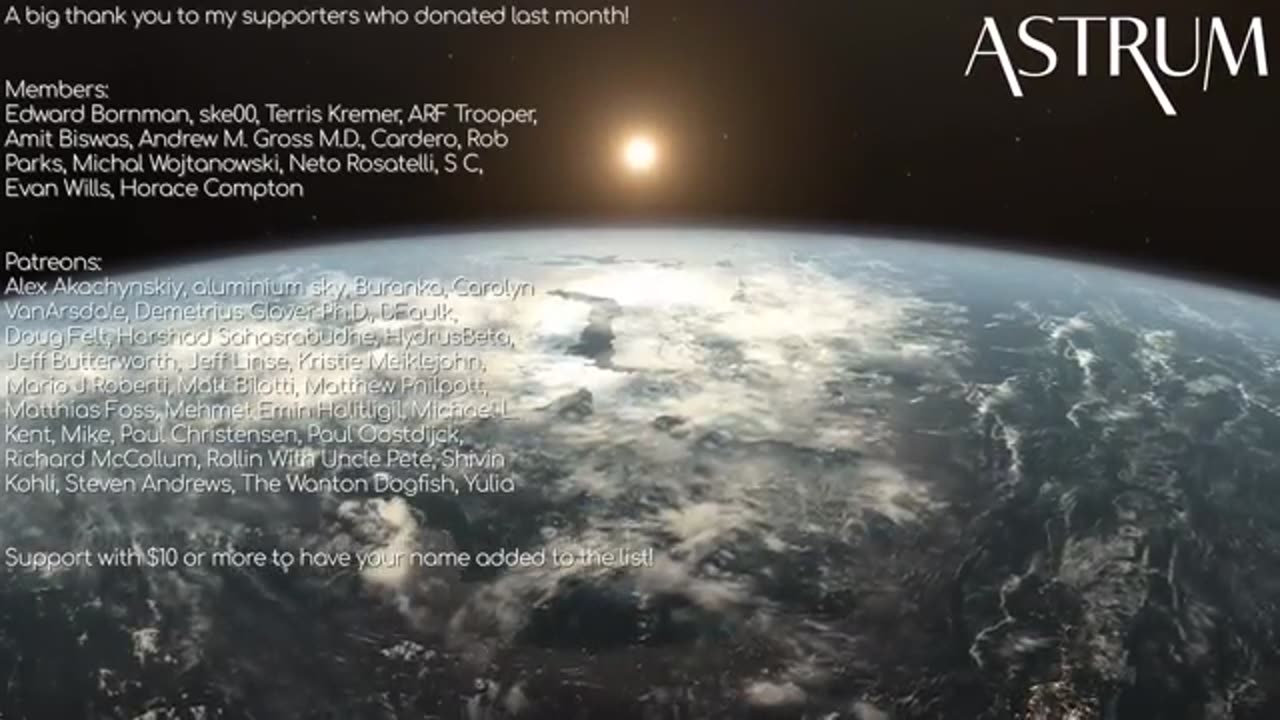Premium Only Content

The Best Earth-like Exoplanet Has 4 Major Problems
The search for Earth-like exoplanets has captivated scientists and the public alike, offering hope for discovering potentially habitable worlds. However, even the most promising candidates often face significant challenges that complicate their status as Earth analogs. Below are four major problems that Earth-like exoplanets frequently encounter:
---
### 1. **Distance from Earth**
Even the most Earth-like exoplanets are located light-years away, making exploration or colonization extremely difficult with current technology. For instance, Proxima Centauri b, a promising candidate, is 4.24 light-years away. While relatively close in astronomical terms, it would take tens of thousands of years to reach it using today’s spacecraft.
---
### 2. **Host Star Activity**
Many potentially habitable exoplanets orbit red dwarf stars, which are smaller and cooler than the Sun but prone to violent stellar flares. These flares can bombard the planet with harmful radiation, stripping away its atmosphere and making it inhospitable for life as we know it. TRAPPIST-1 planets, for instance, face this issue.
---
### 3. **Atmospheric Composition**
Having a similar size and temperature range to Earth doesn't guarantee an Earth-like atmosphere. Many exoplanets may have atmospheres dominated by gases like carbon dioxide or methane, lacking the oxygen-rich composition essential for most Earth life. Additionally, the presence of greenhouse gases could lead to extreme conditions, such as a runaway greenhouse effect similar to Venus.
---
### 4. **Surface and Water Availability**
Liquid water is a key factor for life, yet its presence on Earth-like exoplanets remains unconfirmed. Many candidates may lack sufficient water or have surfaces dominated by either uninhabitable deserts or global oceans. For example, super-Earths in the habitable zone might have water but could experience extreme pressure or lack diverse landforms.
-
 1:05:04
1:05:04
Mark Kaye
3 hours ago🔴 Trump Sends Dems Into RAGE Over Flag Burning Executive Order
4.12K3 -
 29:39
29:39
Afshin Rattansi's Going Underground
1 day agoEx-Israeli PM Ehud Olmert: INTOLERABLE Amount of Innocent Palestinians Have Been Killed in Gaza
1.7K20 -
 7:49
7:49
Dr. Nick Zyrowski
6 months agoVitamin D is Dangerous? Get The TRUTH!
3.08K10 -

daniellesmithab
2 hours agoExploring Nuclear Energy in Alberta
3.38K2 -
 LIVE
LIVE
Reidboyy
52 minutes agoNEW FREE FPS OUT ON CONSOLE NOW! (Delta Force = BF6 with Killstreaks)
59 watching -
 2:30:04
2:30:04
Nerdrotic
4 hours ago $1.18 earnedNerdrotic Nooner 509
9.8K -
 1:48:16
1:48:16
Tucker Carlson
2 hours agoCliffe Knechtle Answers Tough Questions About the Bible, Demons, Israel, Judas, Free Will, and Death
64.4K114 -
 LIVE
LIVE
Viss
3 hours ago🔴LIVE - How To Winner Winner Chicken Dinner! - PUBG
148 watching -
 1:00:41
1:00:41
Timcast
4 hours agoTrump MOBILIZING National Guard In NATIONWIDE Crackdown
122K145 -
 1:06:02
1:06:02
Sean Unpaved
3 hours agoQuarterbacks, Coaches, & Contracts: Sanders' Draft Drama, Meyer vs. Harbaugh, & McLaurin's Big Deal
27.8K1